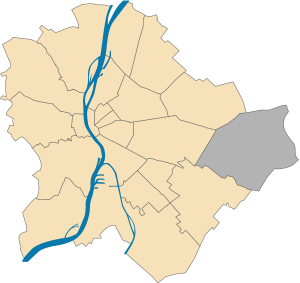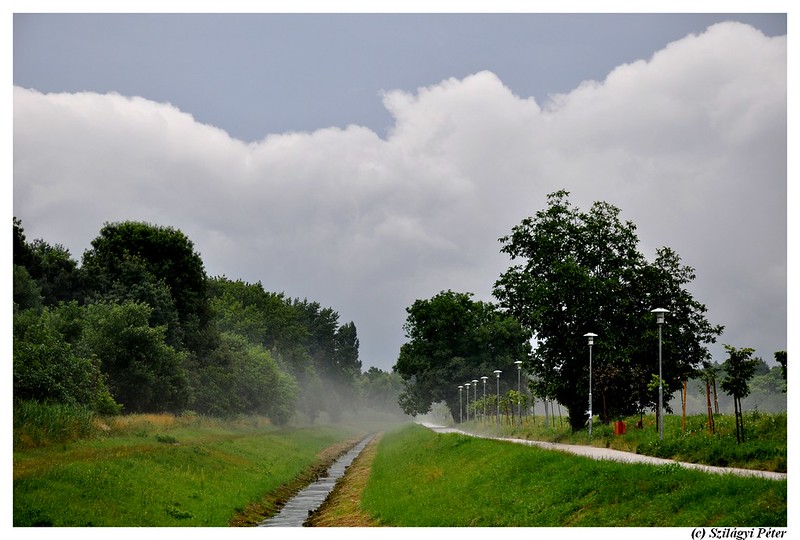Rákosmente: Budapest’s Scenic Suburb of Tranquility and Heritage
Situated in the eastern part of Budapest, Rákosmente is the 17th district and serves as a peaceful suburban escape. This area is characterized by its vast green spaces, lakes, and quieter lifestyle, offering tourists a unique respite from the bustling city center.
Introduction
While Rákosmente may not be on every tourist’s itinerary, it should be, especially for those who desire a break from the crowds. With an array of outdoor activities and historical sights, this district provides a balanced mix of leisure and culture.
Location

Geographic Splendor
Rákosmente is not just another district in Budapest; it’s a natural sanctuary situated in Pest, boasting an elevation comparable to the 235-meter-high Gellért Hill. Dimbe hills predominantly cover the district and are home to the Pesti Plain’s highest point, the 241-meter-high Erdő Hill, which borders Pécs and Maglód.
Green Belt of the Capital
The district stands out for its lush greenery, making it one of the best-served areas in terms of green and forest spaces per capita, alongside districts II and XII. Nature reserves like the 40-hectare Merzse-mocsár, teeming with rare flora and abundant birdlife, and the expansive 150-hectare Naplás Lake, one of the capital’s most ecologically valuable areas, add to its allure.
District Boundaries
Covering an expansive area of 54.82 square kilometers, Rákosmente is the largest district in Budapest, dwarfing the smallest district, VII, by more than 25 times. It shares its borders with several key areas:
- Northwest: District XVI
- West: District X
- Southwest: District XVIII
- Southeast: Ecser and Maglód
- East: Pécel
- Northeast: Nagytarcsa
Sub-Districts:
The district is divided into several sub-districts, each with its unique character:
- Rákoskeresztúr
- Academy Suburb
- Rákosliget
- Rákoscsaba-Újtelep
- Rákoscsaba
- Rákoskert
- Rákoshegy
Whether you’re an eco-traveler, a resident seeking a peaceful abode, or a nature enthusiast, Rákosmente in District XVII offers a harmonious blend of natural beauty and urban amenities. It’s a district where nature and city life coalesce, offering the best of both worlds.
Geography
Rákosmente is bordered by the districts of Zugló, District 16, and the city of Gödöllő, providing an interesting geographical blend. The district is primarily suburban, offering abundant natural beauty, including lakes and forests.

Watercourses and Springs
The district is uniquely positioned at the confluence of three significant watercourses: the Szilas Stream in the north, the Rákos Stream in the central and southwestern parts, and the Gyáli Stream in the southeast. The area is also enriched by thirteen natural springs, adding to its ecological diversity.
Nature Reserves
The 40-hectare Merzse-mocsár Nature Reserve is a jewel in the district’s crown. It’s one of the most pristine wetlands within Budapest’s administrative boundaries, home to many species, including the Hungarian grey heron and the red-breasted blackbird, both protected in Hungary.
Noise Levels
While the district enjoys a largely tranquil setting, it’s worth noting that areas like Alsó-Rákoshegy and the Helicopter residential zone experience some noise pollution due to their proximity to Budapest Liszt Ferenc International Airport. However, the northern parts of these areas and regions further north remain relatively undisturbed, according to noise measurements.
Landmarks
The district’s landmarks might not be as globally renowned as some, but they are certainly worth a visit:
- Rákoshegy Church: A quaint church that’s a true example of modern Hungarian architecture.
- Lake Naplás: The largest lake in Budapest, perfect for a day of relaxation or fishing.
History
Formation and Diverse Roots:
The XVII District of Budapest, also known as Rákosmente, was officially established on January 1, 1950, through the annexation of four previously independent villages: Rákoscsaba, Rákoshegy, Rákoskeresztúr, and Rákosliget. While the district as a unified entity is relatively young, the individual villages that make it up each have rich histories. For instance, local lore suggests that survivors of the Hun migrations settled in what is now Rákoscsaba, naming the area after their leader, King Attila’s son, King Csaba. This historical connection is commemorated in various street and square names throughout the district.
Historical Significance
The Rákos field, adjacent to the district, was a site of national importance during the Middle Ages. Between 1286 and 1540, it hosted parliaments and noble assemblies. The entire district fell under Turkish rule after the fall of Buda in 1541. The villages of Keresztúr and Csaba, which existed then, became taxpayers to the Turkish Porte. They were liberated only after Buda was recaptured in 1686. The area was nearly depopulated due to the intense fighting and was later repopulated primarily by Slovaks and Swabians.
Cultural Footprints
The district has been home to several notable figures. Composer Béla Bartók lived and worked in Rákoshegy from 1911 to 1920, and his former residence is now a memorial house. Other artists like Pongrác Kacsóh, Lili Berky, and Gyula Gózon also spent time in the district. József Gregor, a prominent figure who passed away in 2006, was a proud resident of Rákosliget, and a local school bears his name.
Modernization and Urbanization
The district underwent significant changes starting in the early 1970s with the introduction of large prefabricated housing programs. Many traditional houses in the center of Rákoskeresztúr were demolished to make way for modern housing estates built between 1971 and 1989. This led to a population surge and exposed the area’s infrastructural shortcomings. Although most of these issues were largely resolved by the mid-2000s, the district still has the majority of Budapest’s dirt roads.
Younger Districts:
Rákosliget and Rákoshegy, independent municipalities before the 1950 merger, are relatively younger, gaining independence in 1907 and 1921, respectively. Rákoskert never achieved independence and was annexed to Budapest as part of Rákoscsaba. Another area, Madárdomb, was incorporated only in 1984.
The XVII District is a fascinating blend of diverse histories, cultures, and modern urban development. It is a testament to Budapest’s complex past and dynamic present, offering a unique blend of historical richness and contemporary lifestyle.
Education
The district is a favorable destination for families due to many educational institutions, ranging from primary to high schools, which offer specialized courses.
Museums
While the district may lack large museums, it makes up for it with the following:
- Local History Collections: These are smaller exhibitions often hosted in community centers focusing on the district’s history and traditions.
Twin Towns
Rákosmente maintains twin-town relations with places such as Hévíz in Hungary and Yichang in China. These partnerships foster a mutual exchange of culture and ideas, enriching the local community.
Google Maps of Rákosremete (District 17)
Conclusion
Rákosmente is perfect for those looking to venture off the beaten path and experience a different, more tranquil side of Budapest. From the majestic Rákoshegy Church to the soothing Lake Naplás, this district offers a rich tapestry of experiences to make your trip to Budapest memorable.